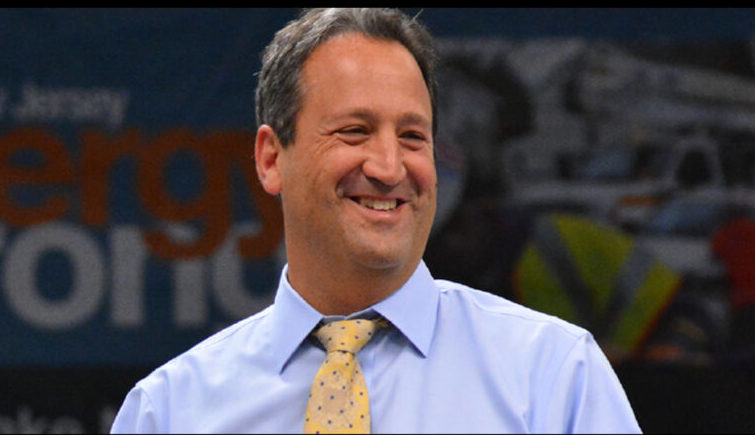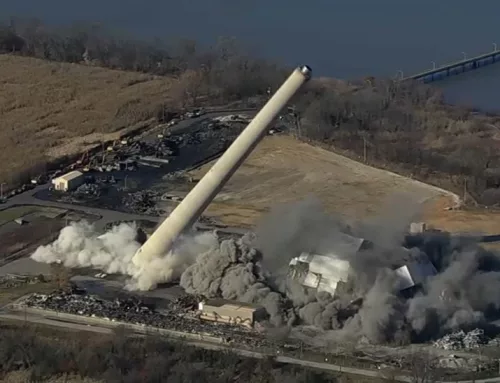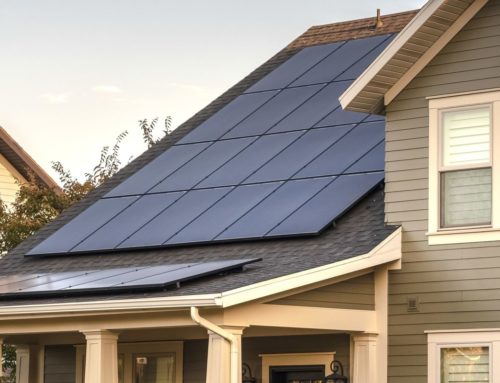New PSEG boss takes over with an eye on wind and solar

Photo courtesy of PSEG
September 5, 2022
Utilities have historically made money by selling electrons. But with more homeowners generating their own electrons, where does that leave utilities? Many utilities have taken a decidedly adversarial position to home solar, but the truth is that while they can slow the adoption of solar, they can’t stop it.
As LaRosa says, utilities will need to focus on the “last mile” and maintaining the wires and transmission system that connects us to the grid and to each other. The future of energy will be a mix of both centralized (large power plants) and also distributed (solar systems and batteries on each home).
On the distributed side, virtual power plants will enable homeowners to not just produce and store their own power on site but to sell to one another and to the grid when they have excess energy. Home solar, batteries, EVs and appliances will be networked together allowing unprecedented control and flexibility in how we produce, use, store and transmit energy.
Home solar and batteries are the first step in the energy revolution. See if they’re right for you by getting started with a free solar assessment.
Here’s a link to the original article in the New Jersey Monitor or you can read the full text below.
When Ralph LaRossa started working for PSEG, the future of natural gas was so uncertain that his parents questioned his career choice.
“My father was like: ‘Jeez, is that industry going to be around for that long?’” LaRossa remembered.
That was 37 years ago, and the Rutherford native has risen since then from his first PSEG job in 1985 as an associate engineer to become the utility’s newest president and chief executive officer. He took over the top job Thursday from the retiring Ralph Izzo, who held the post for 15 years.
LaRossa oversees a $49 billion utility that is New Jersey’s oldest and largest. Founded in 1903, PSEG now employs about 12,500 and serves almost three-quarters of New Jersey residents — 1.9 million gas and 2.3 million electric customers in more than 300 communities.
“I’ve seen a lot of change over the years, from not enough natural gas, to too much natural gas, to what are we doing to the environment,” LaRossa said.
PSEG and other utilities have worked to migrate away from dirty fuels like oil and move into clean energy production while gearing up for an electric future, he added.
“Electric has really become a much more important commodity in the lives of people day in and day out than we were when I started here,” LaRossa said.
Decades ago, he added, “we could have an outage, and people could be out of power for a little while, but now no one accepts a power outage for anything more than 10 minutes without being nervous about their phone charging or the comfort of their home — and pretty soon, it’ll be whether or not I can power my vehicle.”
Climate change has accelerated over that time too, landing new challenges on PSEG’s doorstep — like more frequent and powerful storms.
LaRossa led the utility’s response to Hurricane Sandy in 2012, developing a $4.6 billion infrastructure initiative that helped the utility better respond to extreme weather.
As much change as he has already seen in the industry, LaRossa expects to preside over much more change as the industry shifts toward greener energy sources like solar and wind.
PSEG has partnered with Ørsted on offshore wind energy and also leased some of its land in Salem County for use as a wind port. The utility operates three nuclear plants in South Jersey, and production there remains a priority, LaRossa said.
“We have been at the forefront of investing hundreds of millions of dollars in energy efficiency in the state — everything from helping low-income customers have universal access to those services to helping our hospitals and universities and some businesses that qualify for energy efficiency that maybe would rather use their capital in other areas,” he said.
Decarbonization remains an ongoing goal, LaRossa said.
New Jersey, as an old, industrial state, has the most cast-iron pipes in the nation. Such pipes are prone to leak and release methane, a greenhouse gas that contributes to climate change. PSEG has had a program in place for a decade to replace them, and LaRossa said he remains committed to that work.
LaRossa said the utility also is considering blending hydrogen into its natural gas, a new approach supporters say can cut its carbon intensity.
In coming years, with the car industry shifting to cleaner technology like electrified vehicles, LaRossa sees that “last mile” to homes and businesses as one of the utility’s biggest priorities.
“As more people get electric vehicles and they plug in at their homes, we’re going to make sure the infrastructure is reinforced to handle them,” he said
New PSEG boss takes over with an eye on wind and solar

Photo courtesy of PSEG
September 5, 2022
Utilities have historically made money by selling electrons. But with more homeowners generating their own electrons, where does that leave utilities? Many utilities have taken a decidedly adversarial position to home solar, but the truth is that while they can slow the adoption of solar, they can’t stop it.
As LaRosa says, utilities will need to focus on the “last mile” and maintaining the wires and transmission system that connects us to the grid and to each other. The future of energy will be a mix of both centralized (large power plants) and also distributed (solar systems and batteries on each home).
On the distributed side, virtual power plants will enable homeowners to not just produce and store their own power on site but to sell to one another and to the grid when they have excess energy. Home solar, batteries, EVs and appliances will be networked together allowing unprecedented control and flexibility in how we produce, use, store and transmit energy.
Home solar and batteries are the first step in the energy revolution. See if they’re right for you by getting started with a free solar assessment.
Here’s a link to the original article in the New Jersey Monitor or you can read the full text below.
When Ralph LaRossa started working for PSEG, the future of natural gas was so uncertain that his parents questioned his career choice.
“My father was like: ‘Jeez, is that industry going to be around for that long?’” LaRossa remembered.
That was 37 years ago, and the Rutherford native has risen since then from his first PSEG job in 1985 as an associate engineer to become the utility’s newest president and chief executive officer. He took over the top job Thursday from the retiring Ralph Izzo, who held the post for 15 years.
LaRossa oversees a $49 billion utility that is New Jersey’s oldest and largest. Founded in 1903, PSEG now employs about 12,500 and serves almost three-quarters of New Jersey residents — 1.9 million gas and 2.3 million electric customers in more than 300 communities.
“I’ve seen a lot of change over the years, from not enough natural gas, to too much natural gas, to what are we doing to the environment,” LaRossa said.
PSEG and other utilities have worked to migrate away from dirty fuels like oil and move into clean energy production while gearing up for an electric future, he added.
“Electric has really become a much more important commodity in the lives of people day in and day out than we were when I started here,” LaRossa said.
Decades ago, he added, “we could have an outage, and people could be out of power for a little while, but now no one accepts a power outage for anything more than 10 minutes without being nervous about their phone charging or the comfort of their home — and pretty soon, it’ll be whether or not I can power my vehicle.”
Climate change has accelerated over that time too, landing new challenges on PSEG’s doorstep — like more frequent and powerful storms.
LaRossa led the utility’s response to Hurricane Sandy in 2012, developing a $4.6 billion infrastructure initiative that helped the utility better respond to extreme weather.
As much change as he has already seen in the industry, LaRossa expects to preside over much more change as the industry shifts toward greener energy sources like solar and wind.
PSEG has partnered with Ørsted on offshore wind energy and also leased some of its land in Salem County for use as a wind port. The utility operates three nuclear plants in South Jersey, and production there remains a priority, LaRossa said.
“We have been at the forefront of investing hundreds of millions of dollars in energy efficiency in the state — everything from helping low-income customers have universal access to those services to helping our hospitals and universities and some businesses that qualify for energy efficiency that maybe would rather use their capital in other areas,” he said.
Decarbonization remains an ongoing goal, LaRossa said.
New Jersey, as an old, industrial state, has the most cast-iron pipes in the nation. Such pipes are prone to leak and release methane, a greenhouse gas that contributes to climate change. PSEG has had a program in place for a decade to replace them, and LaRossa said he remains committed to that work.
LaRossa said the utility also is considering blending hydrogen into its natural gas, a new approach supporters say can cut its carbon intensity.
In coming years, with the car industry shifting to cleaner technology like electrified vehicles, LaRossa sees that “last mile” to homes and businesses as one of the utility’s biggest priorities.
“As more people get electric vehicles and they plug in at their homes, we’re going to make sure the infrastructure is reinforced to handle them,” he said
Have a question about the future of solar, clean energy and utilities? Send us a message and we’ll answer ASAP.
Have a question about the future of solar, clean energy and utilities? Send us a message and we’ll answer ASAP.








